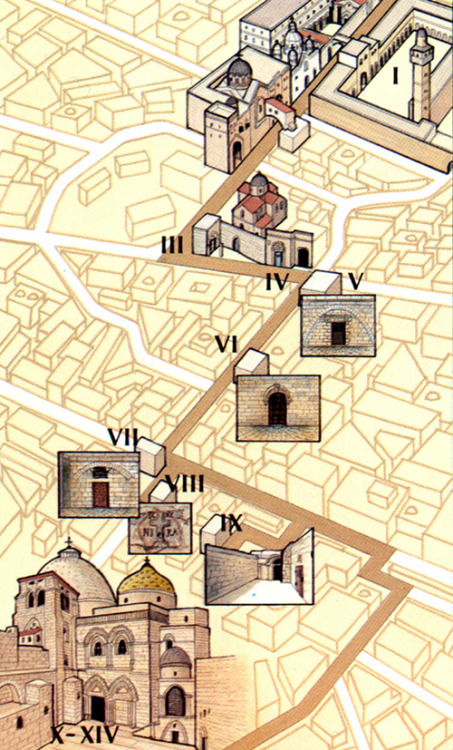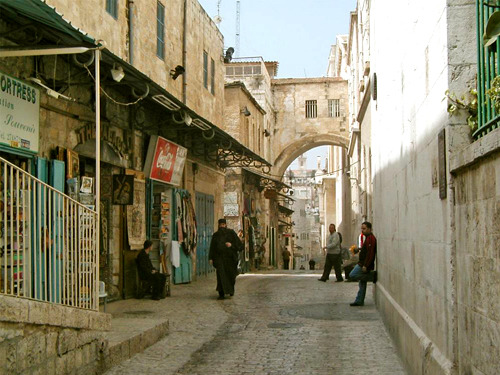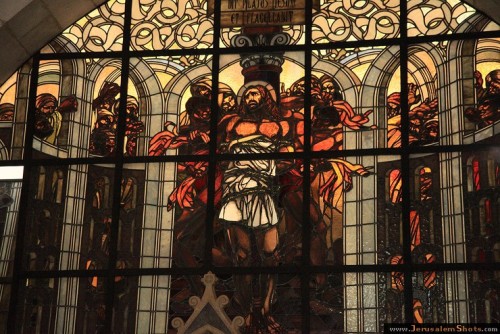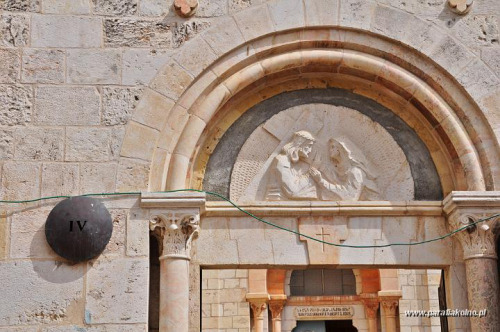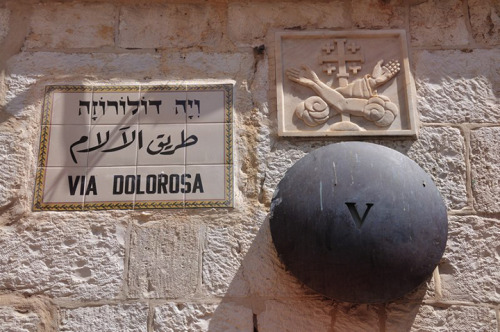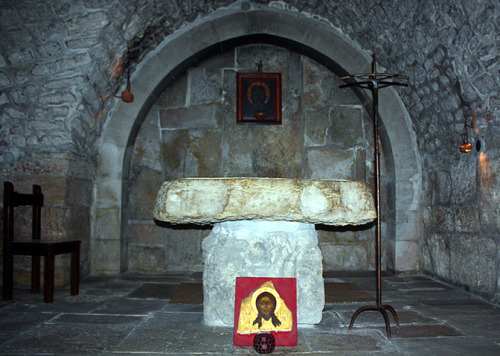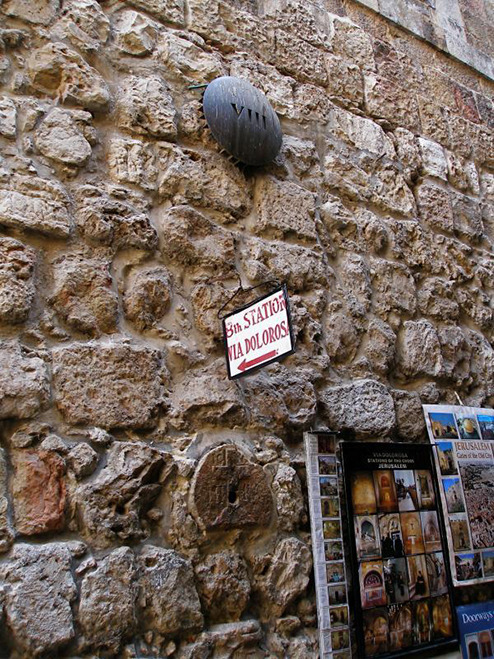weirdpolis:THE WAY OF THE CROSS / VIA CRUCIS / VIA DOLOROSAVia Dolorosa is a street within the Old C
weirdpolis:THE WAY OF THE CROSS / VIA CRUCIS / VIA DOLOROSAVia Dolorosa is a street within the Old City of Jerusalem, and it’s held to be the path that Jesus Christ walked on the way to his crucifixion. The route leads from the Antonia Fortress west to the Church of the Holy Sepulchre over a distance of about 600 metres (2,000 feet). On it there are marked nine stations of the Way of the Cross. First one is in the courtyard of the al-Omariyyah Madrasah (school for Islamic studies), a former army barracks built on the site of the Antonia Fortress. Next is placed within the Franciscan Friary: in The Church of the Condemnation and Imposition of the Cross, and The Church of the Flagellation. Others are located in various chapels along the way. Ninth is placed at the entrance to the the Ethiopian Orthodox Monastery and the Coptic Orthodox Monastery of Saint Anthony. Remaining five are within the Church of the Holy Sepulchre. 1. The Ecce Homo Arch, remnants of a triple arch between Antonia Fortress and Praetorium, where Jesus was condemned to death. (source: www.wingsofeaglesct.com)2. Stained glass from the Chapel of Flagellation. The second station (Jesus recieving the cross) is marked on the site of it. (source: Roman Kriman, at www.jerusalemshots.com)3. Inside the Chapel at the Third Station, marking Jesus’ first fall. Part of the Armenian Catholic Patriarchate, renovated in 1948 by generosity of Polish soldiers. The sculpture is by polish artist, Tadeusz Zieliński. (source: catholicbridge.com)4. Jesus meets his mother, at fourth station. Bas-relief by polish artist Tadeusz Zieliński. (source: www.parafiakolno.pl)5. The markings at the Chapel at the Fifth Station, where Simon of Cyrene helped Jesus carry His cross. 6. Inside the Chapel at Sixth Station, where Veronica wiped the face of Jesus. 7. The Chapel at Seventh Station, at the crossroad with the Oil Market. Marks the second fall. (source: www.wingsofeaglesct.com)8. A stone marking the Eight Station, where Jesus met women of Jerusalem. Greek words IC XC NIKA means “Jesus-Christ conquers". (source: seetheholyland.net)9. Ninth station at the entrance to the Ethiopian and Coptic Monastery. A pillar in the background corner marks place where Jesus Christ fell for the third time.10. The Frankish Chapel in the Façade of the Church of the Holy Sepulchre, where Jesus was stripped of His garments. (source: www.christusrex.org)11. The altar of the Nailing to the Cross at the Church of the Holy Sepulchre. On the left, Altar of Our Lady of Sorrows (Stabat Mater), where XIII station is traditionally commemorated. (source: www.christusrex.org)12. The altar of the Crucifixion at the Church of The Holy Sepulchre. (source: www.christusrex.org)13. The Stone of the Unction, covers the rock on which the body of Jesus would have rested after being taken down from the cross. (source: www.christusrex.org)14. The Holy Sepulchre. Marble slabs cover the bed rock where Jesus Christ was laid. (source: www.christusrex.org) -- source link
Tumblr Blog : weirdpolis.tumblr.com
#via crucis#via dolorosa#jerusalem#holy land#religious
